Antimony
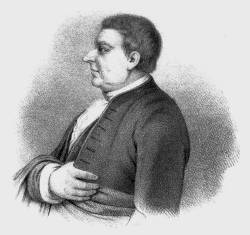
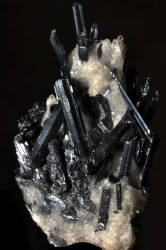
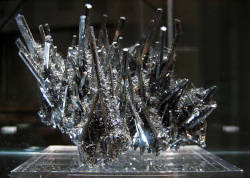
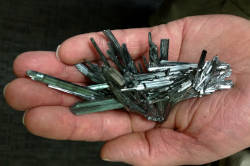
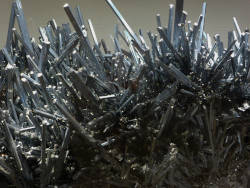
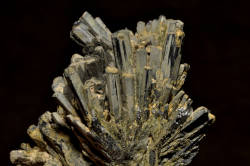
Antimony is a chemical element with the symbol Sb (from Latin: stibium) and atomic number 51.
It is a lustrous gray metalloid, which means it has properties of both metals and nonmetals.
Normally it is mined as the sulfide mineral stibnite (Sb2S3).
Much less important is stibiconite (Sb3+Sb5+2O6(OH))
Metallic, pure antimony is rare and was erroneously identified as lead upon its discovery.
The Swedish scientist and local mine district engineer Anton von Swab discovered it in 1783 in the
 Sala Silvergruva
Västmanland, Sweden.
Sala Silvergruva
Västmanland, Sweden.
Antimony compounds were used since ancient times, they were powdered for use as medicine and cosmetics. In predynastic Egypt it was used as an eye cosmetic (kohl) as early as about 3100 BC, when the cosmetic palette was invented. The Roman scholar Pliny the Elder described several ways of preparing antimony sulfide for medical purposes in his treatise Natural History. The intentional isolation of antimony is described by Jabir ibn Hayyan before 815 AD.
Antimony is still used in various compounds as a medicine to this day. In ancient Egypt and Rome, it was used to treat eye ulcers and eye pustules. In recipe collections from the 15th century, it is mentioned as an ingredient in healing plasters and ointments. After Paracelsus described antimony as an ingredient in dermatological preparations, there was a century-long antimony dispute between supporters and opponents. It was even banned between 1615 and 1688. There are theories that Mozart was the victim of antimony poisoning. He had a medicine chest and often used the emetic potassium antimony tartrate. But the fact remains: antimony is poisonous even in small quantities.
Antimony is a hard, brittle, silver-white metal with a relatively high specific gravity (~6.7) and a relatively low melting temperature. Used in alloys, it hardens the alloy, lowers the melting point, and decreases contraction during solidification. As it expands when the molten metal cools due to the transformation into a different modification, the metal presses itself into all corners and angles of a mould as it solidifies. This means that even complicated shapes and highly patterned surfaces can be produced without blowholes. This even works with alloys, so it is very important for precision casting. Other uses are lead antimony plates in lead–acid batteries, for alloys of lead and tin, additives for chlorine and bromine-containing fire retardants, and in microelectronics.
Stibnite forms in hydrothermal vein deposits in a wide temperature range between 300 °C and 1000 °C. It occurs in paragenesis with many other sulphide minerals. It is a very common mineral formation and has actually been documented at thousands of sites. Antimony also occurs natively and is recognized as a mineral by the International Mineralogical Association (IMA). However, it is rare and has only been found at around 300 locations worldwide. Economically relevant deposits are also rare, usually occurring only in very small quantities in polymetallic deposits. But even the very rare stibnite or stibiconite deposits only have a few percent antimony content. In 2020, global antimony production totalled 78,400 tonnes. China has been the largest producer in recent years and also has the largest reserves. The majority of production comes from the Xikuangshan mine in Hunan.
Industrial processes for refining antimony include roasting and reduction with carbon or the direct reduction of stibnite with iron.
- Examples
 Felsenmuseum Bernstein
Felsenmuseum Bernstein St. Lampertus Fundgrube
St. Lampertus Fundgrube Himmlisch Heer
Himmlisch Heer Ancienne Mine d’Or et d’Antimoine
Ancienne Mine d’Or et d’Antimoine Mine de la Rodde
Mine de la Rodde Mine d’antimoine à Goesdorf
Mine d’antimoine à Goesdorf Sala Silvergruva
Sala Silvergruva
 Search DuckDuckGo for "Antimony"
Search DuckDuckGo for "Antimony" Antimony - Wikipedia (visited: 09-APR-2021)
Antimony - Wikipedia (visited: 09-APR-2021) Antimony Mining (visited: 09-APR-2021)
Antimony Mining (visited: 09-APR-2021)
 Index
Index Topics
Topics Hierarchical
Hierarchical Countries
Countries Maps
Maps